A look into the structural issues dogging women’s country football
Women’s football is alive and growing in country Victoria, but structural issues across the grade is still dogging the sport.
Bass Coast Breakers founder and coach Ella Angarane wants nothing more than to see her players be able to simply pull on a pair of boots and play good football.
She doesn’t want them to know how much she battles behind closed doors for their opportunity to do so.
Ella recalls the multiple occasions where her team have turned up to a game only to find no umpire had been allocated to their match, resulting in a mad scramble to find someone to referee.
Or the times when the Breakers – established in 2017 and premiership winners in 2018 – can’t access ovals for training, or even adequate changing room facilities before a match.
“We just have to fight,” Ella said.
“And you don’t want to burden the girls that are playing … I want them to feel like they’re part of something special, a stand-alone team and an important part of the sporting landscape.
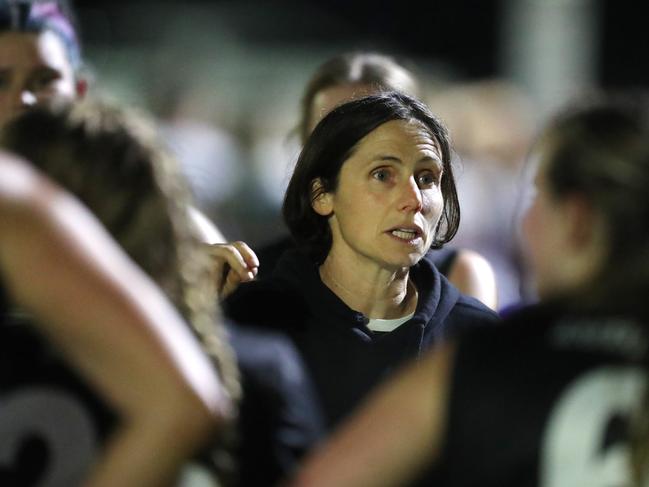
Not that, behind closed doors, we have to fight for that.”
Women’s football is alive and growing in country Victoria. AFLW data showed more than 1300 girls and women’s teams were active across the state this year, and more than 650 of those are in regional Victoria, up on the 600 teams in 2015.
But for teams such as the Breakers, the lack of fair access to resources can distract from their ongoing success and community support.

Ella is the first to say the community has rallied around the team, but it’s at odds with structural issues dogging the sport.
“Our draw comes out last for the week, because they do the men’s draw first,” she said.
“Their division one gets three umpires, and we get whatever’s leftover from that pool.
“It should be getting better, but it’s not.”
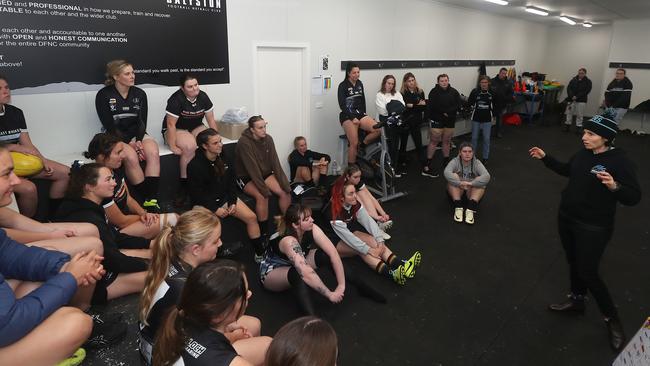
CHANGING ROOMS CHANGING TIMES
The AFL has rallied around women’s football since establishing the first women’s professional league in 2017.
New research published by the University of South Australia reported a 790 per cent increase in the number of women playing AFL, with female community teams growing from 205 in 2010 to 2540 in 2024.
But the study also found AFLW players are paid less than their male counterparts, earning an average of $82,000 compared to the average AFL salary of $519,000.
The AFLW’s Women’s Footy Vision report 2021-2030 flagged equal participation and representation in community football by 2030 as an “aspiration target” for the sport.
It found only 35 per cent of venues have female-friendly change rooms, with sporting facilities in the community having not kept up with female participation in sport.
At the time, then-women’s football general manager Nicole Livingstone said while the sport was moving in the right direction, “significant hurdles remain”.
“This responsibility belongs to all of us … girls and women still face barriers to participating in sport and physical activity,” she said.
More than $5 million was allocated in 2022 by the AFL to fund phase one of the Women and Girls Action plan, designed to drive participation and representation for women and girls from community football through to coaching, umpiring and administration.
And last year, the AFL launched the women and girls community grants program to benefit women and girls’ community football Australia-wide.
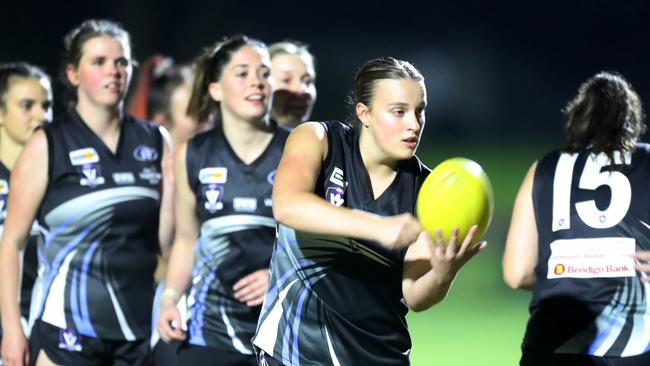
FROM THE GROUND UP
At Albury, Martin White coached the Lavington Panthers under 18 and under 14 girls’ teams for eight years, supporting the players through four grand finals.
But he’s stepped away from the sport, citing ego and an entrenched winning culture as being detrimental to progression of the grassroots sport for women.
“What the AFL has put out for society to see is that they’re giving back to grassroots, but when it comes to the girls I think that’s untrue,” he said.
Martin said a lack of investment in umpires for some of the women’s teams was evident. He recalled receiving an email the night before a game stating the team needed to supply club umpires for the open women’s team.
“It’s really important we get it right. It will retain players, and the sooner they learn the game, the sooner they’ll develop and improve the competition across the board,” Martin said.
“The reason why we’ve had such success with women’s footy is the girls’ competitive nature, but the majority who play at that community level are fantastic. They’re the success stories, they continue to come in, play, have fun, they’re the pioneers.”
Other leagues are making a concerted effort to make women’s football more accessible.
Gippsland Power talent manager Scott McDougal said from the moment the club established women’s and girls’ teams in 2015, they approached it by doing everything “like for like”.
“Both the boys and girls programs are exactly the same. They’re all supported in exactly the same way, from coaching to facilities, as it should be. It’s grown to be a really positive part of our club, having the girls with us,” he said.
Gippsland Power’s footprint spreads from Mallacoota in the state’s east to Tooradin and Officer on the edge of Melbourne’s suburbs.
And every single player across the region is treated the same, Scott said.
“Every single thing we do is done in a fair and equalised way. The girls and boys rotate for who’s getting changed inside verses outside. It goes week to week. And we’d expect to hear some whinging, but we’ve not heard a single thing.”
FACING FORWARD
The decision to treat both the male and female teams in the league as equals has paid dividends, with strong female players coming up the ranks of the regional leagues with their eyes on AFLW glory.
Gippsland Power player Ash Centra, from Sale, has played football for the past 15 years, since starting Auskick with her twin brother at five years of age.
The 18-year-old now has her sights set on being drafted by the AFLW later this year, after spending years juggling her football training with high-level basketball.
“I think being part of such an elite environment really helped elevate my game and allowed me to compete at levels like Vic Country and the Australian Academy,” Ash said.
She joined Gippsland Power in 2022, and was a recent participant in the AFLW Academy.
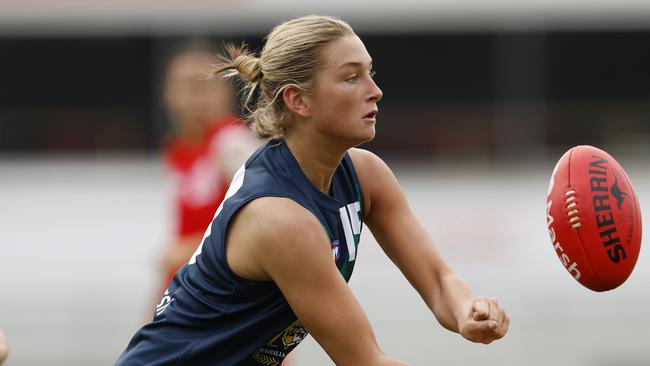
“I think most people are starting to understand that the women’s league is continuing to evolve and improve,” Ash said.
“Personally, I haven’t come across any barriers in my footy journey yet and I hope to think it stays that way but I think that has a lot to do with Gippy Power. They’ve been incredibly inclusive and supportive, and they make sure that the girls team is just as valued and involved in as much as with the boys.”
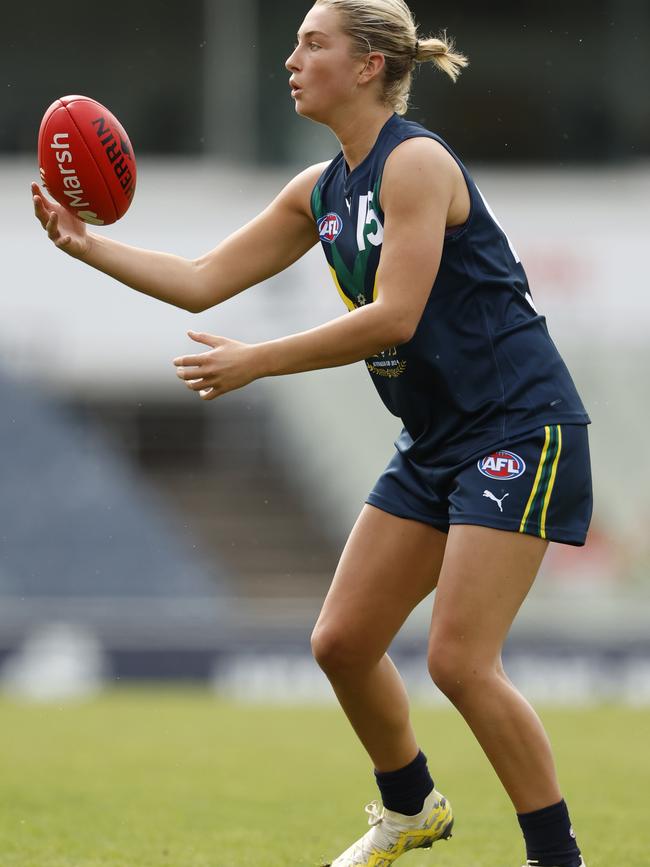
“If any girls are interested in participating in women’s football or women’s sports in general they shouldn’t hesitate … my journey in women’s football has been really rewarding from the start, and I am so confident that the sport will just continue to thrive in the future and I can’t wait to see how far it goes.”





